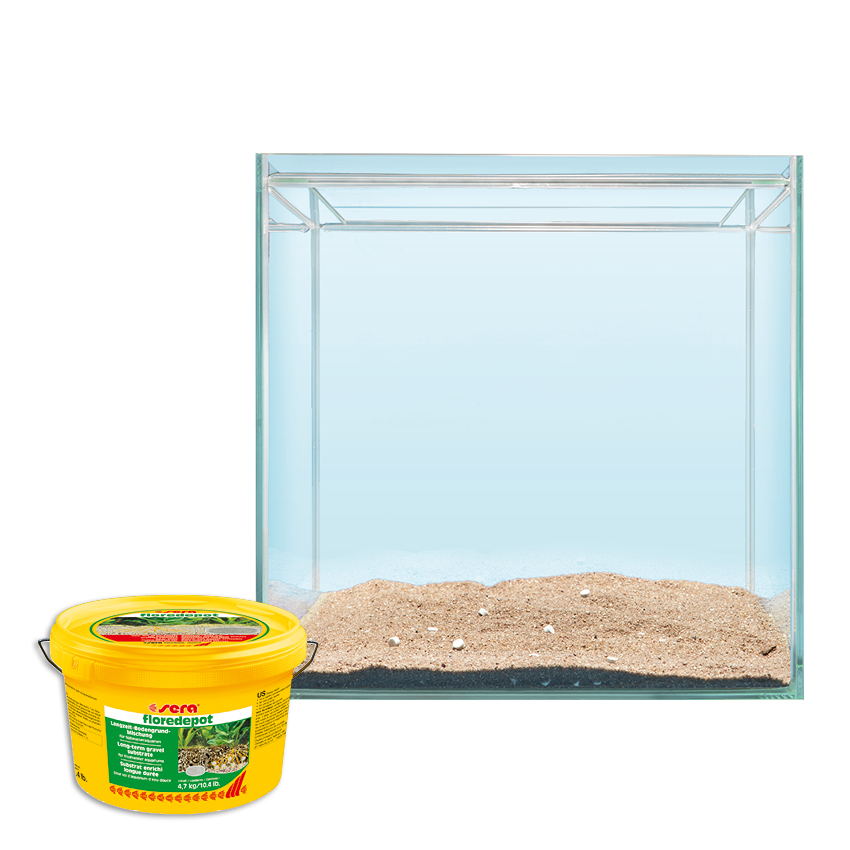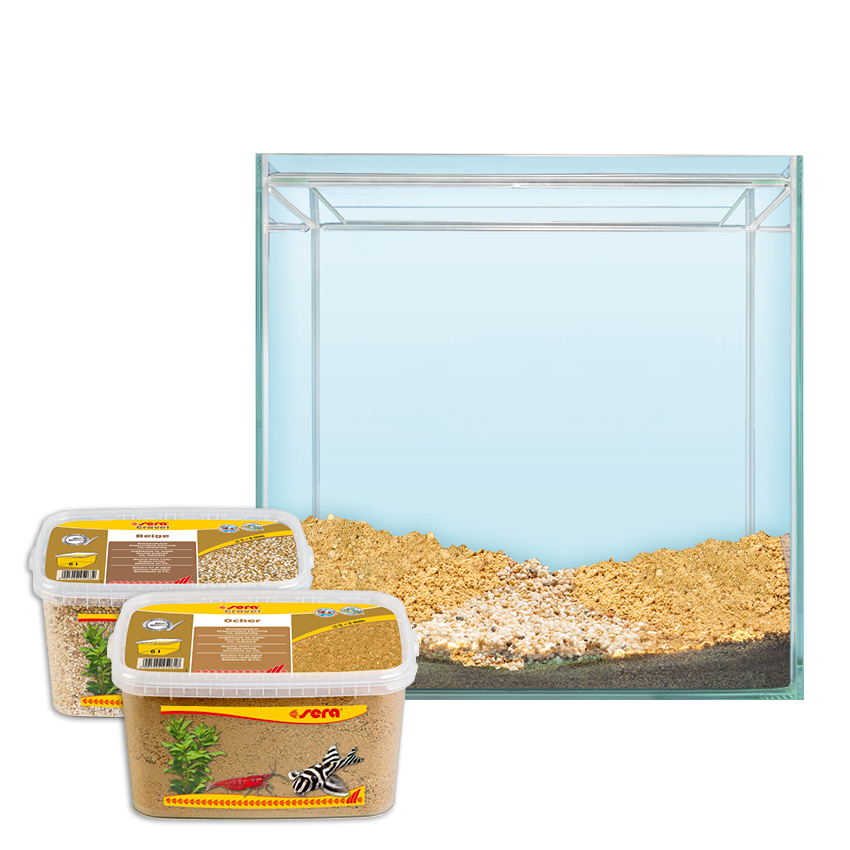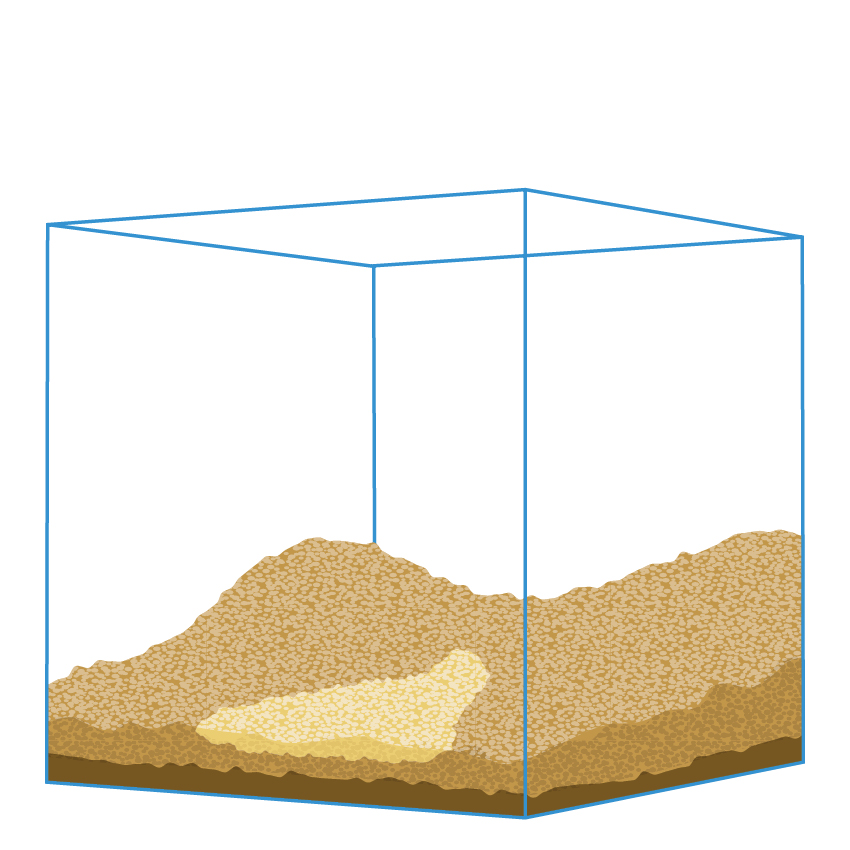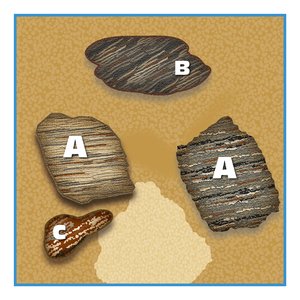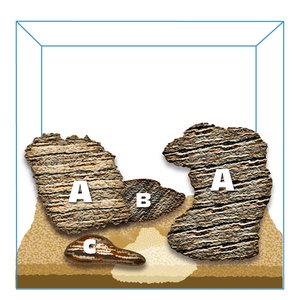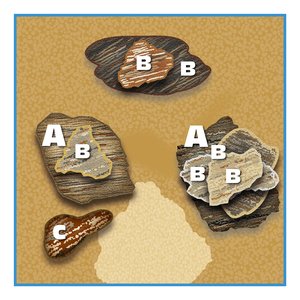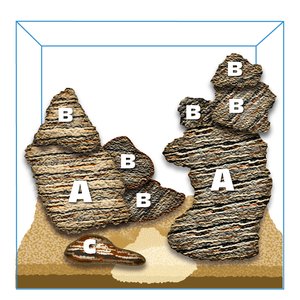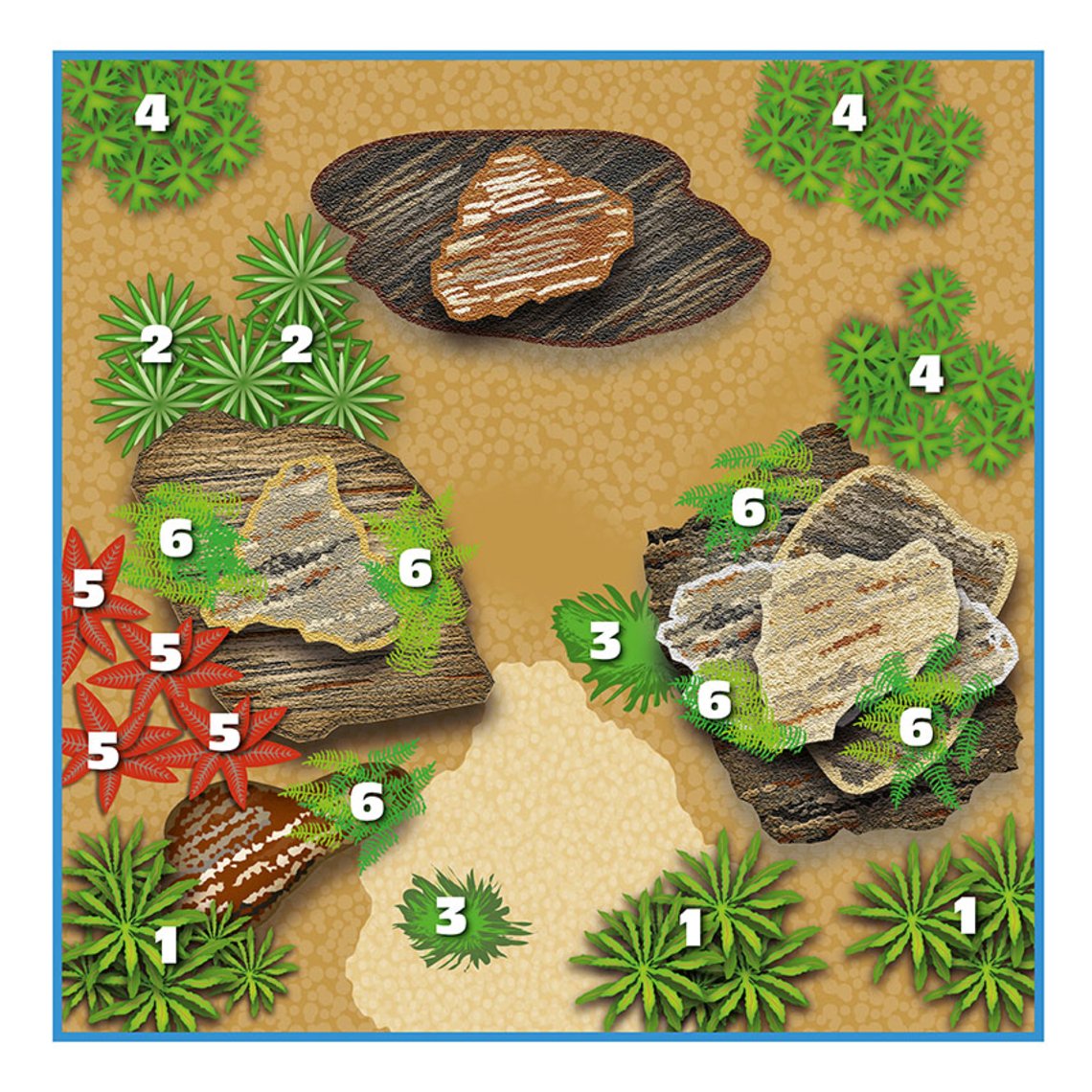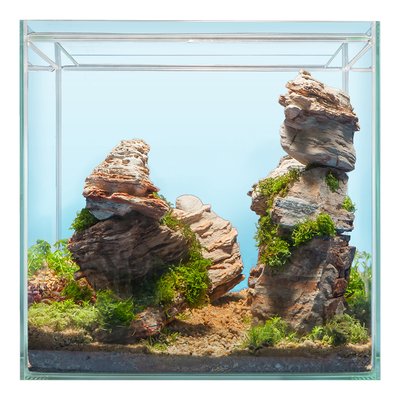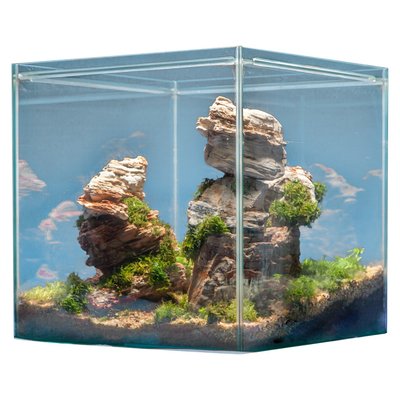Setup instruction for sera Hardscape Grand Canyon
The Grand Canyon hardscape allows imitating the famous canyon in the north of the US State of Arizona. This is included here:
- 6 x sera Rock Asian Pagoda S/M
- 2 x sera Rock Asian Pagoda L
- 1 x sera Rock Grand Canyon S/M
- 1 x sera floredepot 4.7 kg (10.4 lb.)
- 1 x sera Gravel Beige 6 l
- 1 x sera Gravel Ocher 6 l
The canyon landscape in small format can be imitated in only four steps:
1. Fill in nutrient soil
sera floredepot bottom ground must not be missing in the Grand Canyon hardscape. It is distributed in a layer approximately 2–3 cm (0.8–1.2 in.) thick in the entire aquarium, and forms the basis for optimal plant growth and strong roots. For not disturbing the final appearance of the landscape, we recommend hiding the nutrient soil behind the ornamental bottom ground along the aquarium glass.
2. Fill in decorative bottom ground
This hardscape contains two different types of gravel – sera Gravel Beige and Gravel Ocher. The more coarse grained beige colored gravel in combination with the very fine grained ocher colored gravel looks very similar to the bright ground of the Grand Canyon and ideally matches the color of the rocks included with the kit. The ocher colored gravel is poured with a rising slope in both back corners of the aquarium while the beige colored gravel is placed in the foreground. This leads to a mountain imitation close to nature.
3. Place rocks
In the example, the two big Asian Pagoda L (A) rocks are placed in the left and the right of the aquarium. It is also advisable to place the smaller Asian Pagoda S/M (B) rocks on top of them. Due to the arrangement of the remaining Asian Pagoda S/M (B) and Grand Canyon S/M (C) rocks in the front and back areas of the Scaper Cube, the hardscape comes particularly close to the original Grand Canyon landscape.
After arranging the layout, the piled rocks should be attached to each other with suitable glue. Only this will ensure the landscape keeps its shape permanently, and sliding or dropping of rocks is prevented also during cleaning work.
A) sera Rock Asian Pagoda L
B) sera Rock Asian Pagoda S/M
C) sera Rock Grand Canyon S/M
4. Add plants
The moss, Vesicularia montagnei (6), is particularly suitable for being attached on the rocks, and provides additional liveliness for the miniature size Grand Canyon. This can, for instance, be done with suitable glue or fishing line. The other plants (1 – 5) are planted into the bottom ground. Gently press a hole into the gravel with the fingers, or push it aside. Make sure the nutrient soil does not mix with the bottom ground and gets to the surface while doing so.
The roots of the plants can be shortened to 2 cm (0.8 in.) if required, e.g. for planting them more easily. Please use sharp scissors (e.g. sera flore tool S) to do so for avoiding squeezing, which may lead to rot. In case of smaller plants such as bottom covering plants, we recommend cleaving the plant carefully and without damaging single stems, and to plant them in smaller bushes with some distance to each other. This is best done with a pair of tweezers (e.g. sera flore tool P).
Tip: Before adding fish, it is worthwhile with new Cube setups to wait until the plants have grown on and cannot be pulled out by the fish anymore.
The hardscape setup just serves as an inspiration – there are no boundaries to your creativity.
The following plants have been used in our setup example:
1. Pogostemon helferi (2 x)
2. Pogostemon erectus (2 x)
3. Eleocharis acicularis (2 x)
4. Ranunculus inundatus (3 x)
5. Alternanthera reineckii (4 x)
6. Vesicularia montagnei (5 x)
This video comprises the single steps
